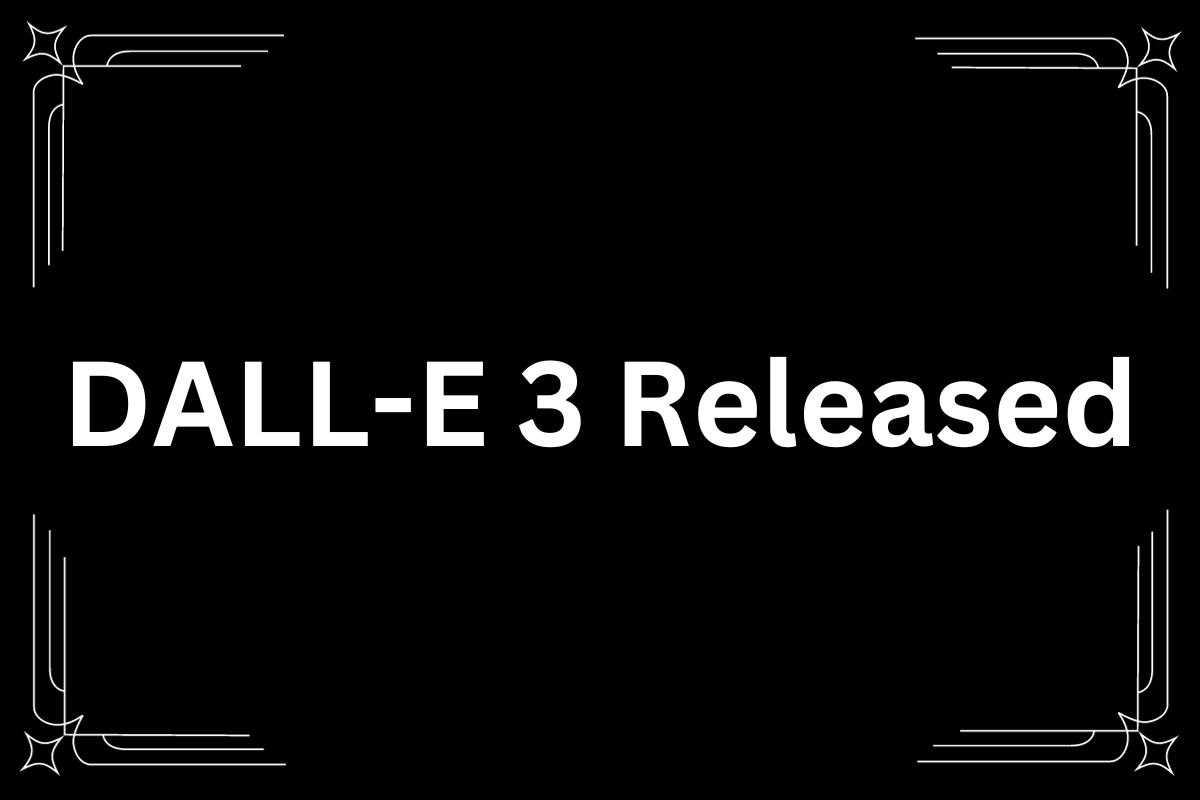DALL-E 3 has made its debut, and it comes with notable improvements over its predecessor, as announced by OpenAI. Here, you’ll find a comprehensive overview of the latest model.
OpenAI has introduced DALL-E 3, the third iteration of its groundbreaking generative AI visual art platform. This latest release brings exciting enhancements to the DALL-E experience, including improved contextual understanding, seamless integration with ChatGPT, and robust safety measures. In this article, we’ll delve into the details of how to use DALL-E 3, its integration with ChatGPT, and the safety precautions implemented by OpenAI to ensure responsible AI art creation.
DALL-E 3 has been released and it’s better than ever
Before diving into the latest features of DALL-E 3, let’s take a moment to revisit what DALL-E is all about. DALL-E is an AI system designed to transform text prompts into vibrant and imaginative images. Its previous iterations, DALL-E and DALL-E 2, demonstrated the potential of AI-generated art but had some limitations in understanding nuanced prompts.
DALL-E 3 represents a significant advancement in AI art generation. OpenAI researchers have dedicated extensive effort to enhance the system’s capacity to comprehend the context of prompts. This means that when you convey your creative vision to DALL-E 3, it is now better equipped to grasp the subtleties and intricacies of your descriptions.
Integration with ChatGPT
One of the standout features of DALL-E 3 is its seamless integration with ChatGPT, OpenAI’s chatbot companion. This integration streamlines the art creation process, broadening its accessibility to a wider audience. Now, you don’t need to possess exceptional creative skills to utilize DALL-E; you can rely on ChatGPT to generate a suitable prompt for your artwork.
Here’s how it functions: You simply request ChatGPT’s assistance in crafting a prompt, and it will generate a paragraph that DALL-E 3 can utilize to create your artwork. While DALL-E 3 still accommodates individual prompts, ChatGPT’s support makes AI art creation more user-friendly and inclusive for all.
Accessibility and Release Date of DALL-E 3
The highly anticipated DALL-E 3 is slated for an initial release to ChatGPT Plus and ChatGPT Enterprise users in October. Subsequently, research laboratories and API services will gain access during the autumn season. Although OpenAI plans a phased rollout for DALL-E 3, they have not yet disclosed a specific date for its availability to the general public free of charge.
OpenAI is firmly dedicated to ensuring the responsible utilization of DALL-E 3. To achieve this, the company has invested significant efforts in implementing robust safety measures. OpenAI collaborated with external red teamers and experts who intentionally pushed the system’s boundaries to assess its safety. These measures encompass input classifiers designed to assist the language model in disregarding certain words to prevent explicit or violent prompts.
Crucially, DALL-E 3 has been configured to abstain from generating images of public figures when the prompt explicitly mentions a name. Sandhini Agarwal, a policy researcher at OpenAI, has expressed “high confidence” in these safety measures. However, it is imperative to bear in mind that while the model is equipped with robust safety mechanisms, it is not impervious to imperfections and will undergo ongoing refinement and improvement.
As for copyright concerns
OpenAI is taking proactive measures to honor the rights of artists. In an effort to mitigate potential legal concerns, artists have the option to exclude their creations from future iterations of text-to-image AI models. Artists who hold the copyright to their images can submit a removal request through OpenAI’s website. Consequently, a forthcoming version of DALL-E will prevent results that resemble the artist’s work or style.
Historically, artists have pursued legal action against competitors of DALL-E, such as Stability AI and Midjourney, as well as the art platform DeviantArt, alleging the unauthorized use of their copyrighted content for training text-to-image models.
In summary, DALL-E 3 introduces a range of exciting features, including improved contextual comprehension, streamlined prompts through ChatGPT integration, and robust safety measures. OpenAI’s dedication to responsible AI art creation, coupled with its commitment to safeguarding artistic rights, signifies a significant advancement in the realm of generative AI art. As we eagerly anticipate its release, the future of AI-assisted creativity shines brighter than ever. For additional details, you can visit the official DALL-E page.



